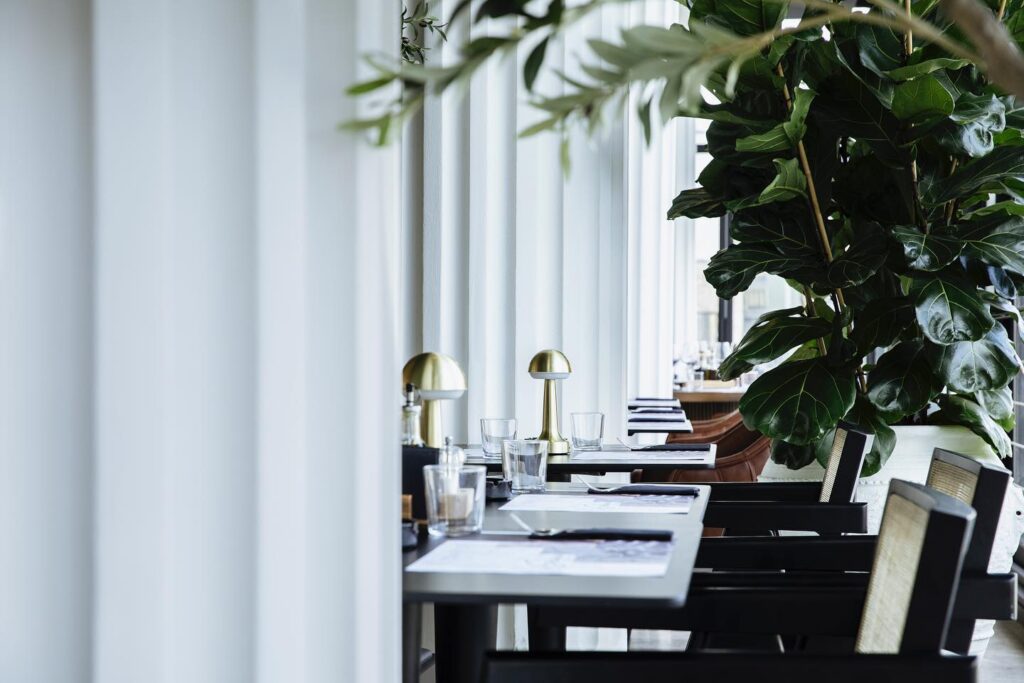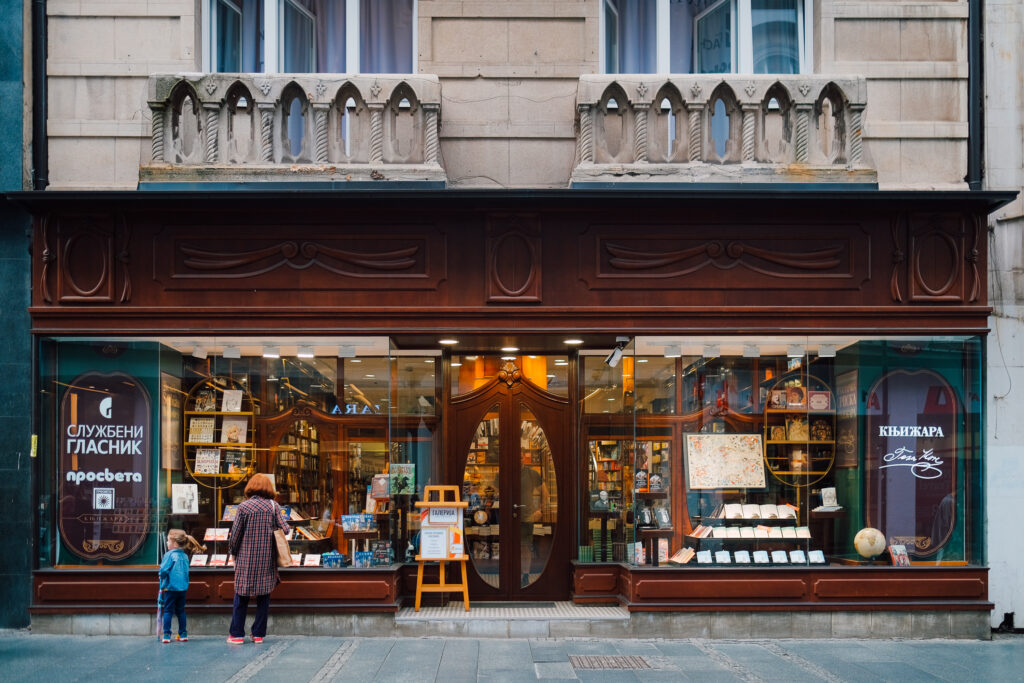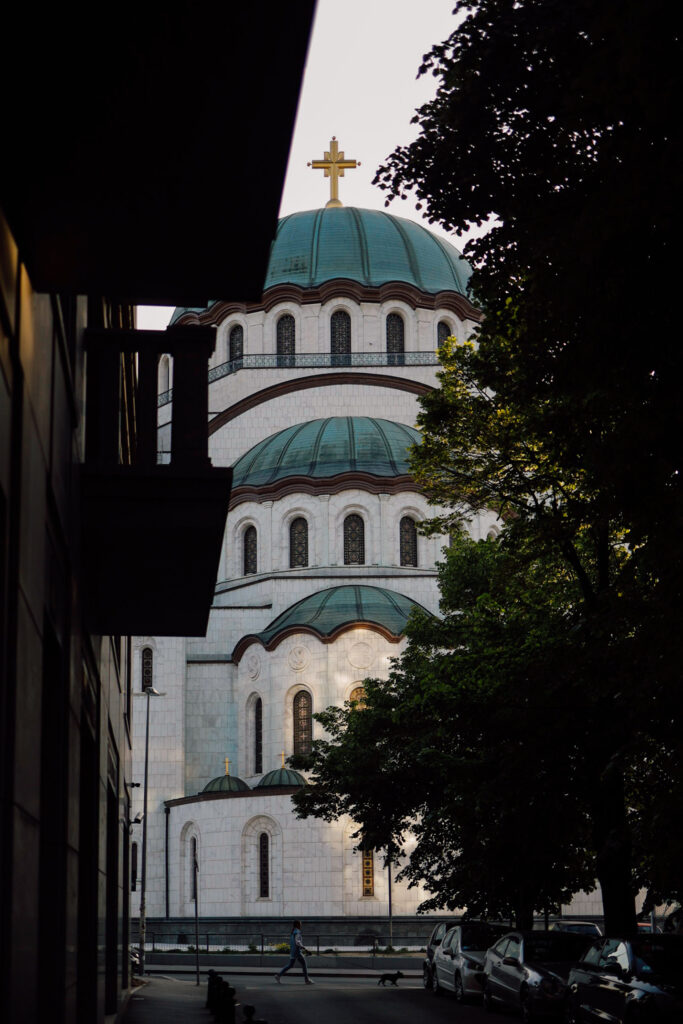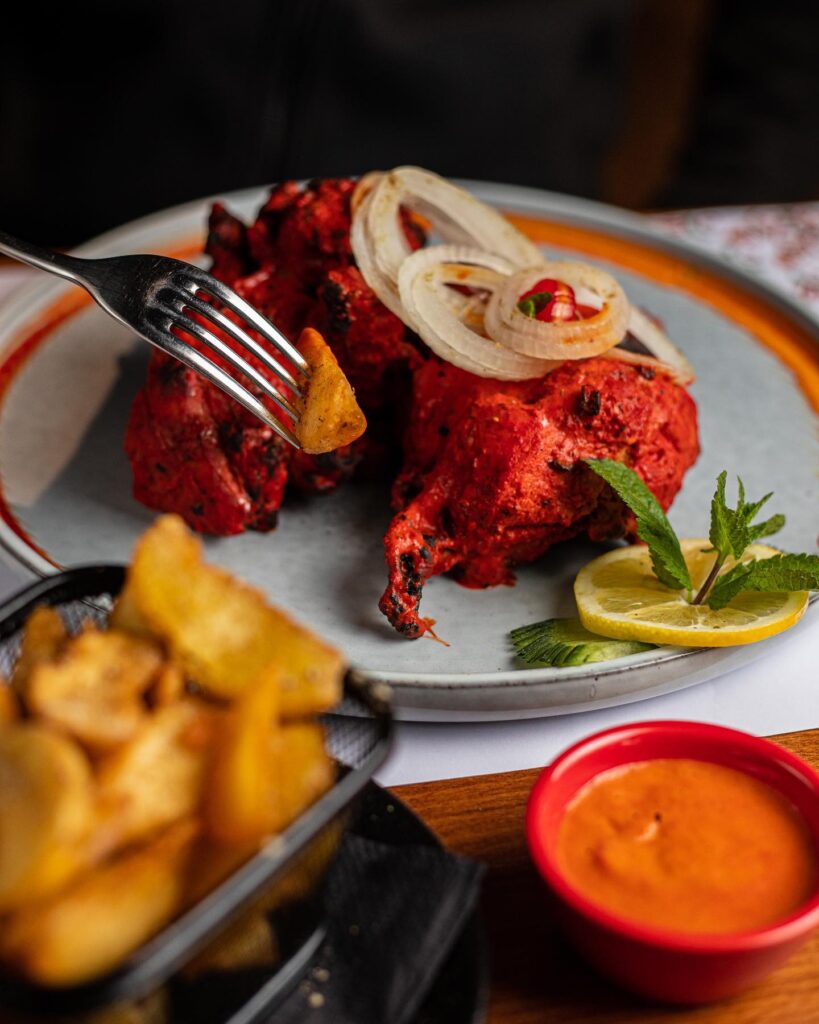What to taste in Belgrade: main local cousine’s specialties From ajvar and pljeskavica to baklava and “Cockta”
Serbian food might seem too brutal for a tourist, but grilled on open fire meat, rich soups (chorba) and nourishing bureks with yogurt do not make the full list of dishes this country offers. Here is a big selection of the most interesting and unusual food you should definitely try while in Belgrade.
ADVICE | MUST SEE
WORDS: VIKTORIJA MARTINOVA
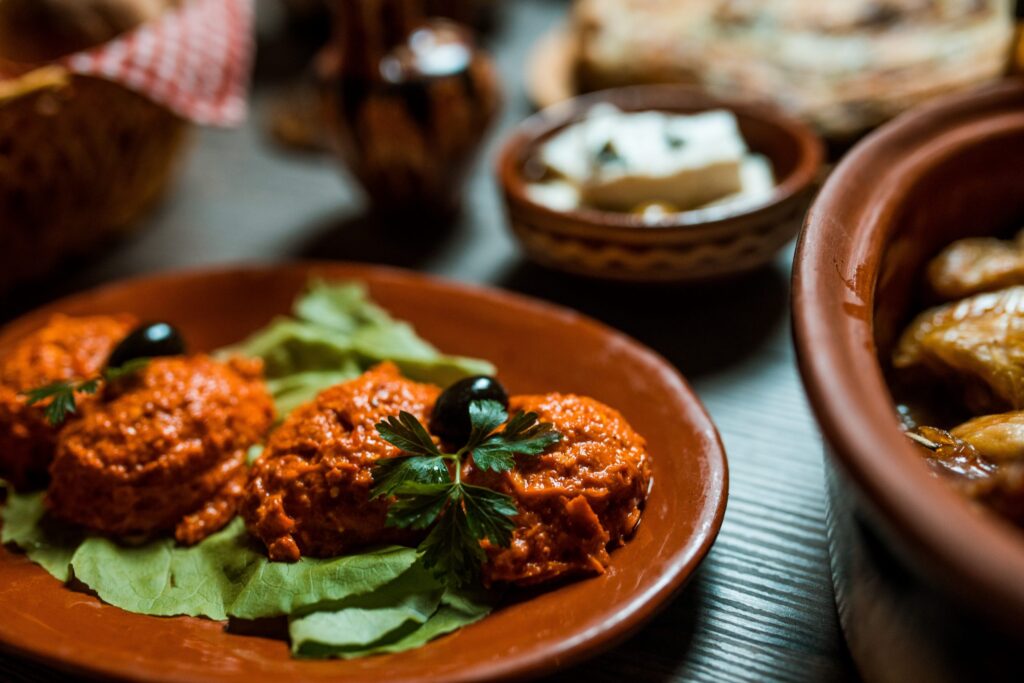
Ajvar
Ajvar is is a condiment made from sweet bell peppers (some add tomatoes and/or eggplants). If it is made just from sweet peppers they call it “blagi” (smooth), if some hot peppers are added it is “ljuti” (piquant). In rural areas the whole family is involved in making ajvar: peppers need to be roasted, peeled, minced in a huge cauldron, then you add some sunflower oil and salt, mix it once again, cook and put in jars). Ajvar making season is autumn, and it is usually served in restaurants during “the winter menu” (in summer Serbs prefer fresh vegetables).
Where to taste: “Zlatar” (Preradoviceva str., 9А) is on of the most famous yet not so touristic home cuisine restaurants. While here you can also try roasted goat which is, unlike lamb, veal and pork, served in just a couple of Belgrade restaurants.
Baklava
After almost 500 years under Ottoman empire ruling Serbian cuisine inherited a lot from its conquerors, including baklava, originally Turkish sweet. It is a layered filo pastry dessert dipped in honey with various nuts (almonds, cashew, walnuts, pistachios), poppyseeds, dried fruits (if you are not scared of calory bomb) and even chocolate reaching the ultimate sweetness.
Where to taste: “Balkan baklava” in Carice Milice street 15 offers wide range of baklavas but you should also pay attention to “tulumba” (pastry fried in oil and sweetened with sugar syrup), “shekerpare” (baked almond buns), and “kadaif” (baked thin “noodles” made of flour and eggs with sugary sherbet).
Boza
Boza (or bosa) is a slightly sweet non-alcohol beverage made of corn flour, sugar, water and barm. Just a hundred years ago it was impossible to find café with no boza, and in Serbian towns there are still some monuments to “bozadziyas” — producers and sellers of the drink.
Where to taste: Patisserie “Pelivan” (Bulevar kralja Aleksandra, 20) — the oldest in Belgrade — was opened with money its first owner Mustafa Pelivan earned selling boza and ice-cream (he was also a prize-winning wreslet, but that’s another story). “Pelivan” still belongs to his family who claim that their boza’s recipe has never changed since 1851.
Burek
Burek is a layered filo pie with various fillings. Though Bosnians would argue that only a meat pie can be called “burek” (they have different names for all the other options, e.g. “krompirusha” for the one with potatoes filling), in Serbian capital you’ll find any kind of those, including one with chocolate cream called “eurocream”. This is another example of Ottoman cuisine leaving its traces in Balkans, though there are also Middle Asian and Middle Eastern varieties. The most authentic way to have your burek is in the morning at a bakery with a glass of plain yoghurt. Some will claim that such a combination is both the best breakfast and a cure for hangover.
Where to taste: Bakery Aleksich across Botanical garden (Draže Pavlovića str., 2) is a great place considering its one of the oldest Belgrade bakeries that offers wide choice of traditional Balkan baked goods.
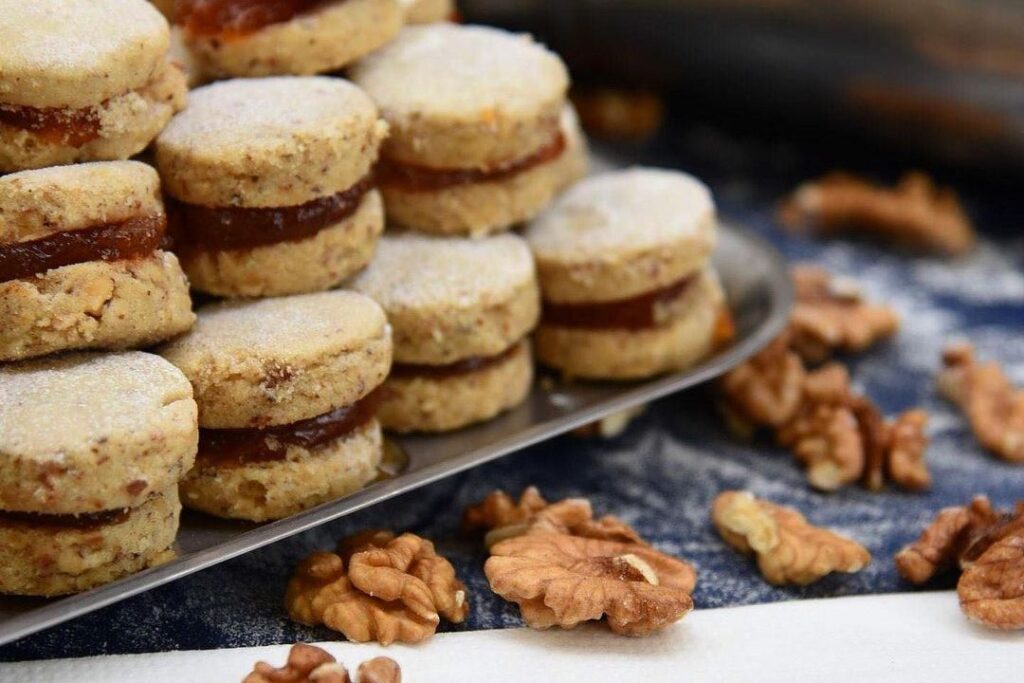
Vanilice
Vanilice are shortbread cookies with jam filling. Famous Serbian writer and unrivaled Belgrade describer Momo Kapor dedicated several stories to them: moms would pack those cookies for the road (they almost do not expire), and grandmas would make them on the same tables fathers would read afternoon newspapers at (“In Praise of Journalists”).
Where to taste: almost in any patisserie, vanillice are classics hard to ruin. For example, head to “Šušić i kolači” (Vračar, Sinđelićeva str., 38). Those who consider themselves real gastronomical enthusiasts can find Momo Kapor’s mother’s recipe and bake vanilice from scratch.
Girice
Girice are small sea fish (also known as bristling, brisling, garvie — this fish has more names than bones) with to great advantages compared to other seafood. First, it doesn’t contain mercury and therefore is actively recommended by Serbian nutritionists, and second, due to its really small bones you can eat the whole fish with head and tail not bothering with scaling. In local opinion girice fried in flour is the best beer snack.
Where to taste: simpler is better — in this case the rule is 100% correct, so you totally to join local fishermen in “Stari šlep” (Kej Oslobođenja 4V) for some girice and tales why extra posh restaurants Zemun is famous for are not the place to enjoy fried fish and beer (also local of course).
Domaća kafa
Domaća [domacha] kafa translates as “home made coffee” meaning very finely ground coffee brewed by boiling in jezve. You may also know it as “Turkish coffee”, but many Serbs would silently blame you for colonialism should you dare use that name especially in national cuisine places (in some they might even correct you out loud). Domacha kafa might be “gorka” (with no sugar or, literally, bitter) or “slatka” (with sugar). That kind of coffee is served with a glass of water (tap water in Belgrade is completely safe to drink) and sometimes with lokum (Turkish delight).
Where to taste: Bar “Balkanski špijun” (“Balkan spy”, Vuka Karadžića str., 7а) named after a seminal Yugoslavian movie.
Zova
Zova is both elderberry and any drink with it. To know if you like elderberry “juice” there is no need to search for a restaurant that serves it, it is wiser to visit any major supermarket, e.g. “Maxi” or “Idea”. During a tour through shelves with Balkan non-alcohol beverages pay attention to two more ex-Yugoslavia inventions: Cedevita and Cockta. The first — instant juice with vitamin C — was invented in 1969 by Croatin pharmacist Martin Stankovich. Back then it was orange flavored and sold in pharmacies only. Nowadays “Cedevita” has six different flavors and can be bought in about any store. Slovenian Emerik Zelinka was the first one to mix “Cockta” in 1959, he used sweetbrier, vitamin C, caramelized sugar, and herbs. Its name derives from “cocktail”, not “Coca-cola”, though some believe those sparkling beverages do taste alike.
Kaymak
Kaymak (kajmak) is soft cheese made of milk skin (the one you get on top of boiled rich milk) and salt. It probably sounds less delicious than the actual flavor reminding of buttery salted mascarpone is, and yes, instead of trying to get this description you should try kaymak itself. Not per se, might upset your stomach, but as a spread it is just perfect! “Young” (mladi) kaymak tastes milkier and more tender, “old” (stari) is thicker and has more pronounced cheese flavor.
Where to taste: as mentioned above good bread (or, even better, freshly baked buns) is responsible to turning one into kaymak devotee, our advice is to go to restaurant “Mala Slavija na Sajmu” (Bulevar Vojvode Mišića, 37) and order „lovačke lepinje” (grilled flatbread).
Knedle
Knedle are balls boiled potato-dough with a sweet filling (usually plums or apricot). Yes, if you take it literally (don’t!), those are jam in mashed potatoes coated in breadcrumbs. There is a similar dessert “gomboce” originated in Hungary (Szilvásgombóc), though Serbs, Croatians, Slovaks and Polish all claim for the title of “knedle’s” or “gomboce’s” (they’ll understand you whatever you call it) inventors.
Where to taste: «Ferdinand knedle» — a chain of monoconceptual sweet-shops. Here you can try or take to go knedle only but of any kind, at least it seems so. Passion fruit and wild blackberry, coconut and white chocolat, Nutella and ground cookie — you name it! The chain is called after emperor Ferdinan (1793-1875), who could as it is told demand his favorite dessert at any time of the year, saying: «I am the emperor, and I want knedle».
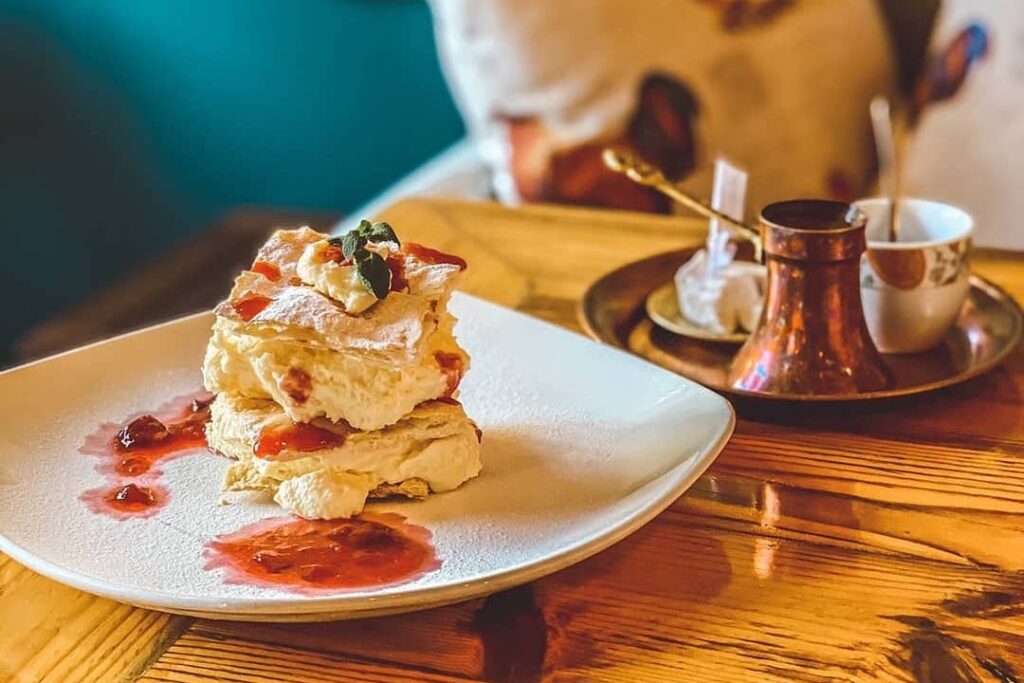
Krempita
Krempita is yet another European dessert with arguable origin. Some believe it is a descendant of French mille-feuille and is a “relative” of Russian cake Napoleon, the others insist that krempita (custard cream within puff pastry) is an Austrian-Hungarian dish. However, you should certainly order a cup of coffee and a glass of water when tasting these “sugar bomb”. Most likely, you’ll love it.
Where to taste: “Mezerestoran Dvorishte” (Svetogorska str. 46) is the location to try the most unusual variation of krempita, a pure embodiment of chef’s imagination and magic. The name of the restaurant itself comes from words “bite to eat” and “garden”, so before having a dessert enjoy small portions of Mediterranean and (surprisingly!) Armenian appetizers on a cozy summer terrace. But don’t forget to make a reservation ahead, ever since the restaurant was recommended by Michelin it is pretty crowded.
Pečenje
Pečenje [pechenye] — meat (pork, lamb, veal) prepared on a roasting jack, real source of pride for Serbian men. That kind of meat doesn’t require complicated side-dishes and evening gawns: 300 g of pečenje, simple vegetable salad and lepinja (traditional baked flatbread) is all you need for a perfect Sunday lunch!
Where to taste: it would be perfect to visit town of Chachak as it is famous for its roasted meat, so in Belgrade you should also look for “chachan pechenjara”. We suggest you go to BK-032 (Džordža Kratovca str. 38) and buy some to go: just like all the best meat corners in the capital it doesn’t serve food on site.
Pizza
Pizza is of course an Italian dish, but its Serbian interpretation deserves a separate article in our gastronomic dictionary. Only on thin dough and only in a street-food corner (in restaurants they serve Napoli or Rome versions, and we need the Belgrade one) with lots of extras that one normally wouldn’t associate with pizza. For example, you can have your slice with Russian salad on top.
Where to taste: “Bucko” (“Fatty”) in Francuska str. 18. The stand works till 1 a.m., and it is believed to be the best place to have a solid meal after a party. Or before. Or even instead of it.
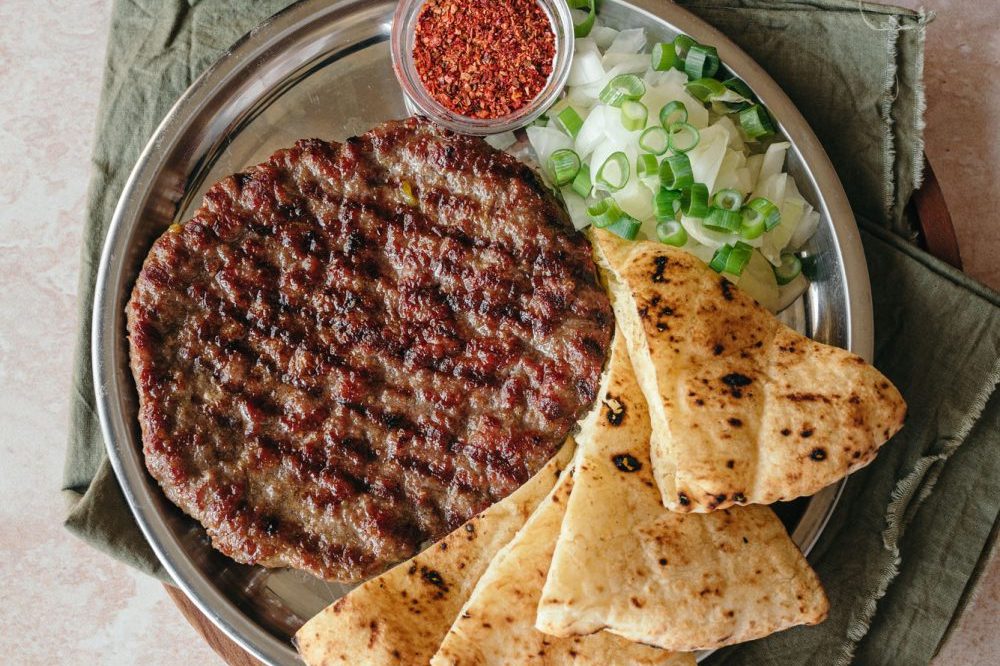
Pljeskavica
Pljeskavica is a grilled dish made of minced meat (classic recipe requires just veal, but sometimes it is a mix of veal and pork) with nothing but salt and spices. In some restaurants they also have “gourmet pljeskavica” with cheese, bacon and onion, but we suggest you try the basic one first.
Where to taste: “Brdo piva” (Stevana Brakusa str. 5). Even though the name translates “Lots of beer” and actually sounds perfect for a local beer pub this kafana (local restaurant) is perfect to try pljeskavica. But to be honest you can order any meat dish and be amazed with its taste. If coming with friends go for “meshano meso” (big grilled meat plate including pljeskavica, sausages, etc.).
Prshut
Prshut (Pršut) — salted dry-cured on cool air ham, usually it’s pork ham, but there are veal and lamb variations as well. The name pretty obviously comes from Italian word “prosciutto”, or if we dig deeper from Latin prae exsuctus (very dry). By the way it is an awesome souvenir from Serbia to make a meat lover happy!
Where to taste: “Znak pitanja” (Kralja Petra str. 6) — one of the oldest kafanas in Belgrade (the closet translation of “kafana” is probably “tavern”, but it doesn’t fully describe all the charm of traditional Serbian restaurants). Be brave to order “Tanjir zakuska na vash izbor” (Appetizers plate of your choice), and a waiter will certainly bring you prshut, and also cheese, ajvar and duvan-chvartsi (tobacco cracknel fried up to fibers) — that is also a specialty you should put on your list. And, of course, don’t forget to find out why the place is called “?” (trust us, it’s a pretty funny story).
Chevapi
Chevapi (Ćevapi) — Serbian interpretation of Turkish “kebab” (you must remember by now that 500 years of Ottoman ruling had some serious influation on Serbian cuisine) — short sausages made of minced veal meat. In “the right” places they are served in portions of 5 or 10 pieces with chopped onions (eventually with fries, but those are OK only on kid’s menu) and lepinja.
Where to taste: even Serbs themselves admit that the best chevapi are made in Bosnia, so look for them in one of “Walter” restaurants named after “Walter Defends Sarajevo”, spy action movie about the World War II. Allowing Emir Kusturica to play his first screen role it became a classical representative of Yugoslavian cinema.
Chorba
Chorba (Čorba) is neither soup, nor stew, but rather something in between. The name itself was borrowed from Persian “shorba” through Turkey (not a surprise, right?) intermediary. Being extremely rich liquid dish for weaker eaters chorba is enough for a lunch, while brave foodies can order it as a starter. “Telecha chorba” is a slumgullion cooked with veal, potatoes, onions, carrots and spices, “pilecha” is the same thing, with chicken instead of veal, “riblja” is a fisherman soup.
Where to taste: the veal one is to be found in any traditional Serbian restaurant including “Znak pitanja” mentioned above, but we recommend to start with the fisherman’s soup in “Malevilla” restaurant (Zemun, Kej oslobođenja bb). They cook it with freshly caught fish and serve with homemade noodles in a metal pot, while the Danube view will make your gastronomic feast even more romantic.
Shopska salad
Shopska salad (Šopska salata) is made of cucumbers, tomatoes, onions, soft salt cheese alike feta, and hot pepper (be careful, it is really hot!). We know for sure that it’s named after the region of Shopluk situated close to Bulgarian capital Sofia. That is why (also because salad’s ingredients remind of Bulgarian flag’s colors) many believe the dish is Bulgarian. But south-eastern would remind one that they also used to live on the modern Bulgaria territory and can claim full rights as salad’s inventors. Though, just in case, there is also Serbian salad (same recipe, no cheese).
Where to taste: in any (literally any!) restaurant, but in summer, during the season of cornichons from Leskovac (most of the year Serbia eats Greek hothouse cucumbers which are way less flavory).

